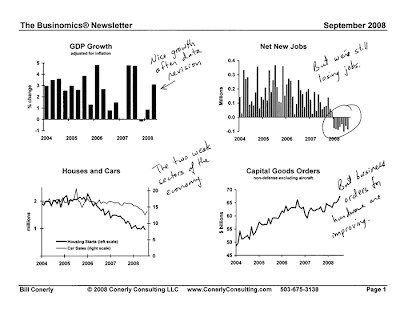Here at the conclusions of a study released yesterday by the Tax Policy Center:
The tax proposals of both presidential candidates would alter effective marginal tax rates in complicated ways. Senator McCain’s plan would—among other things—reduce statutory rates, increase the dependent exemption, and raise the AMT exemption level. In addition to also changing statutory rates and raising the AMT exemption, Senator Obama would modify existing deductions and tax credits and introduce several new ones. The numerous phase-ins and phaseouts that these credits entail would affect marginal rates, lowering them for some taxpayers and raising them for others.
Overall, the Obama plan would lower effective marginal tax rates for the majority of households. In 2009, only about 1 in 7 households would see an increase in their marginal rate. Only at the top of the income distribution—households making at least $500,000 a year—would a majority of taxpayers face higher rates. Obama’s plan would leave the average marginal rate on wages and salaries for the economy as a whole unchanged at 24 percent in 2009. In that same year, close to 80 percent of the population would see no change in their marginal rates under Senator McCain’s plan and most other tax units would face lower rates; only about 1 percent of households would experience a marginal rate increase under the fully phased in McCain plan. Overall, Senator McCain’s plan would reduce the average marginal tax rate on wages and salaries by about 1 percentage point, to 23 percent in 2009.
Senator Obama’s proposal would result in an average marginal tax rate of 25 percent on wages and salaries in 2012, lower than under current law but higher than if the tax cuts are extended. Because Obama would leave the top two statutory rates at 36 and 39.6 percent and reinstate PEP and Pease, taxpayers with more than $1 million in income would face an average marginal rate of 40 percent, 6 percentage points higher than under the McCain plan. Overall, because it would extend all of the individual income tax components of the 2001–06 cuts and increase the dependent exemption, the McCain plan would lower the average EMTR for all households slightly relative to a tax cuts extended baseline and significantly compared with current law.
For the full report, click here.



